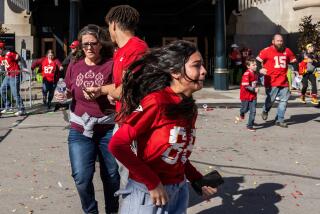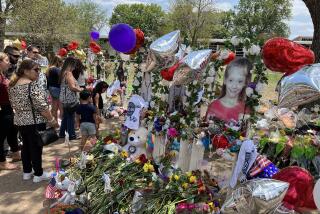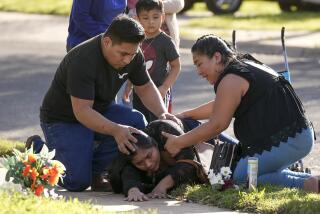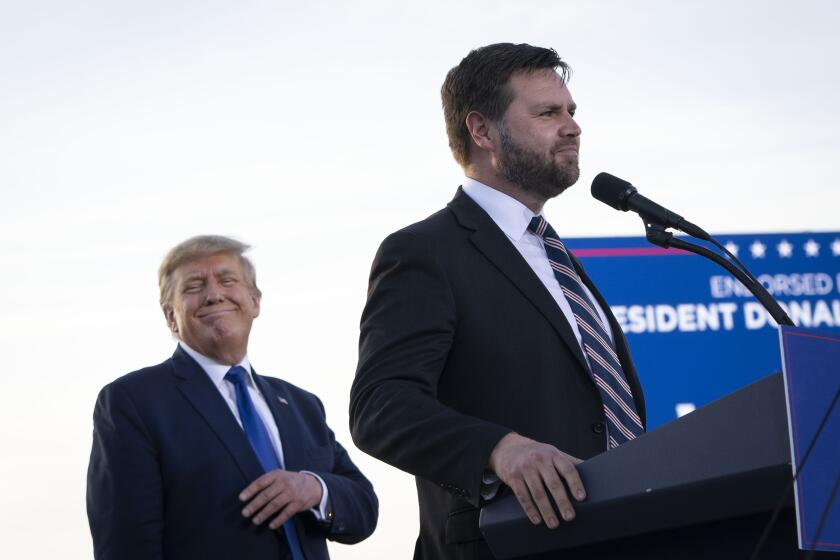Opinion: Is video to blame in deadly attack on Dallas police?
I watched a police officer being murdered on TV on Thursday night. Maybe you did too. CNN ran it on a loop during coverage of the attack on Dallas police that left five officers dead and nine other people, seven of them cops, wounded.
It was hard to tell what was happening in the grainy, low-resolution images until Ismael DeJesus, who happened to be staying in a hotel across the street from the shooting, explained the scene he captured with his cellphone camera. Then the fuzzy recording became a little too clear as it showed a chilling glimpse of real death and violence the public rarely sees.
It was a nightmarish cap to a week of disturbing videos: Philando Castile dying in a car after being shot several times by police in suburban St. Paul, Minn. (I’m still amazed his fiancée, Diamond Reynolds, had the presence of mind to activate her cellphone video immediately after the shooting.) Alton Sterling being shot by police during a struggle in front of a Baton Rouge, La., convenience store. Dylan Noble, a 19-year-old shot to death last month by Fresno police as he lay on the ground. That one I didn’t watch; it was already too much. Way too much.
There was a time very recently when Americans were generally shielded from gruesome and graphic images. Mainstream newspapers rarely, if ever, ran pictures that included dead people. Television images were edited so as not to show gratuitous displays of carnage and violence. That changed abruptly and dramatically with the proliferation of video-equipped smartphones and the popularity of video sharing on social media. The landscape of the news cycle has been fundamentally transformed, for good or for ill. Probably a bit of both.
Without video, it’s unlikely the details of the deadly encounters between officers and Castile and Sterling -- or those of Tamir Rice, Eric Garner or Walter Scott before them -- would have made much impact in the national consciousness. Reading about an account of a killing can never match the drama and emotion of witnessing it. And without the attention, the important and unfinished discussion about policing and race begun after the deadly police shooting of Michael Brown in Ferguson, Mo., two years ago might have fizzled long ago.
It’s possible, though, that the graphic images also may have prompted Thursday night’s rampage. Would Micah Xavier Johnson, who authorities have identified as a gunman in the case, have acted if those videos had not been made and shared with the world? According to Dallas Police Chief David Brown, Johnson said he was upset about the shootings of Castile and Sterling and wanted to kill white people, preferably white cops. Would something else have set Johnson off if not for the recent news? It’s impossible to say, but crazy people with murderous intent don’t need much to set them off.
Now we also have images -- thanks again to citizens armed with cellphones -- showing the real threat facing the county’s law enforcement officers in a country filled with angry and possibly crazy people with guns. The various clips of officers under fire Thursday night, though terrifying to watch, were a heart-wrenching counterbalance to the Alton and Castile videos.
Individually these videos may be things we don’t want to see. But perhaps they are, collectively, things we need to see.
Follow me @marielgarzaLAT
MORE FROM OPINION
5 arguments against gun control — and why they are all wrong
After a week of brutal shootings, America has run out of words
More to Read
A cure for the common opinion
Get thought-provoking perspectives with our weekly newsletter.
You may occasionally receive promotional content from the Los Angeles Times.











